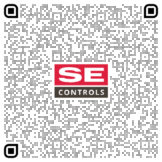The duty of the Accountable Person, outlined in the Building Safety Act, is to take all reasonable steps to prevent building safety risks. Here, Nelson Godinho of SE Controls, outlines what is required and how a truly digitised approach helps to achieve compliance
The required technologies to achieve a digitalised approach to life safety are now commonplace so it is a choice, not a limitation of technology that is preventing improved building safety, despite the introduction of the Building Safety Act in April 2022.
The Building Safety Act imposes specific requirements for higher risk buildings (HRB), defined as those at least 18 metres tall or with at least seven storeys and a minimum of two residential units. Like properties managed by many social housing and facilities management professionals as well as those involved in buy-to-let and student accommodation.
What information is required
There are three building safety ‘gateways’ intended to ensure that building safety has been incorporated from design through to occupancy. Each one acts as a hard stop on the project with work unable to continue to the next phase without approval from the appointed Building Safety Regulator.
The first comes at the end of the planning stage and requires those responsible for the project to demonstrate that building safety has been considered as part of the outline planning application. A fire statement needs to be submitted as part of passing this gateway to detail how fire safety has been incorporated.
At the end of the design phase, before construction can begin, the duty holders must submit detailed information about the building ‘as designed’ as well as the competence of the principal designer and principal contractor. This must include details of how building safety will be maintained throughout construction as well as while occupied. In particular, the fire strategy will need to be approved at this stage. Having a detailed design of life safety systems, typically specifying the essential product characteristics at asset/device level referenced both in the Building Regulations and the harmonised standards, is critical to achieving the desired outcomes. The duty holders must also outline the strategy for the management of the digital golden thread information. The information must be structured to allow it to be retained, accessed and transferred effectively.
Before the building can be occupied it must be certified as safe with a completion certificate issued by the Building Safety Regulator. To receive this certificate, the duty holders must provide details of the as-built building along with key information about the building and declarations from the principal designer and principal contractor that it complies with the Building Regulations. Completion of this stage also requires confirmation that the digital golden thread information has been handed over to the ‘accountable person’.
Drivers for change
Smoke control systems are rarely activated unless in an emergency. Those who are responsible for a building must ensure that the systems will perform as intended when called upon.
Manual, periodic inspections coupled with decentralised record-keeping may result in outdated data, potential human errors, and the risk of missing or misplaced records. Consequently, the opportunities for proactive maintenance and timely remediation are limited, which may jeopardise system performance during emergencies.
How a digitalised approach helps to achieve compliance
With the right systems and innovations in place, every asset that makes up the life safety system in a building can be combined into a digitalised system or ‘ecosystem’. This will change how systems are managed in key areas:
An actuator on an automatically opening vent (AOV) can have its parameters, settings and performance tracked in real-time from the moment it is manufactured, right through its lifetime. This means that in the event of a fire, it can be proven digitally that the product was safe and compliant at any point in its history, including in the event of a fire.
Configurable technology allows parameters of the products within a life safety system to be tailored using technologies such as Bluetooth and mobile applications, removing the requirement for laptop or specialist equipment on site.
A digitalised approach also provides total transparency detailing exactly who has interacted with the products in a life safety system, what they did, why they did it and when.
Also, with the installation of a 4G-enabled router in every building, remote product validation is also possible whereby products can potentially be tested, and the weekly test results recorded, validating its performance against the fire strategy available in the cloud. Communication of all the data on the life safety systems can be securely and automatically transmitted and stored in the cloud, where it can be accessed by everyone responsible for the building.
Creating and managing data and content in a structured way via a common data environment will enable it to be consumed and accessed by a wide range of stakeholders using an ever-increasing number of asset management platforms.
Moreover, maintenance processes can be streamlined with remote diagnostics and support. The local or in-house maintenance team in some cases can resolve the issue, removing the requirement for costly engineer callouts, minimising response times and ensuring prompt action in case of faults or maintenance requirements.
The Building Safety Act, as with most legislation, is complex in places. However, if disciplined approaches are taken in software and technology selection, content management and data strategy, satisfying the
requirements of this and future similar legislation will become simpler to achieve. Most importantly, it prioritises the life safety of residents in social housing communities.
To download SE Controls’ whitepaper ‘Understanding the Building Safety Act: Driving safety with a holistic technology-driven approach’, please scan the QR Code.

Nelson Godinho is Fire Engineer at SE Controls

